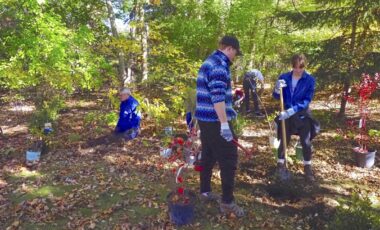Hall’s Pond I-Spy for Spring 2024
As you walk around the sanctuary, can you see us?
continue reading →Spring Bird Walks at Hall’s Pond
Three consecutive Mondays -April 29, May 6, and May 13, 7:00 to 8:30 AM Friends of Hall’s Pond will conduct guided bird walks timed for spring migration, on an easy half-mile loop, led by Neil Gore. Whether it’s sunny, cloudy, or light rain!
continue reading →Community Work Days
Each spring and fall the Friends organize work parties to remove the trash, and invasive plants and restore the sanctuary with new plantings. The 2024 Spring Community Work Day is Sunday, May 5, 11:00-2:00.
continue reading →Quick Links
-
See & Share Sightings
Please share your reports of interesting happenings at Hall’s Pond Sanctuary and enjoy reading others’ posts.
continue reading → -
December 2017 Newsletter
Walk down Beacon Street from Coolidge Corner alongside the westering winter sun.
continue reading → -
Fall/Winter 2016 Newsletter
THE LIFE STORY of one tree is in truth the story of the constant change in an entire forest over a century. This was one key message that Lynda Mapes presented at the 40th anniversary celebration of the Friends of Hall’s Pond on June 12.
continue reading → -
Hall’s Pond Community Day
Horticultural activities will include planting of new grasses in Nan’s Meadow and preparation for an expanded fern garden in Amory Woods.
continue reading → -
-
Join the Friends
Help Friends of Hall’s Pond maintain and improve the Sanctuary with financial support, we are now accepting online donations!
continue reading → -
Fall/Winter 2015 Newsletter
ANOTHER YEAR is running to the finish line. As with all of our friends and families, life sure sees changes. Hall’s Pond Sanctuary is settling in for its long winter nap with the trees, shrubs and perennial going dormant, migratory birds are flying and the animals of all varieties are settling in.
continue reading → -
A Brief Historical Overview
At the time of European settlement, much of the area that is now North Brookline was wetland. Amory Park and Hall’s Pond were part of a particular kind of wetland—an Atlantic White Cedar swamp—that extended to the Charles River. The high level of acidity and the low level of oxygen in such a swamp greatly slow down decay, building up peat.
continue reading → -
-













